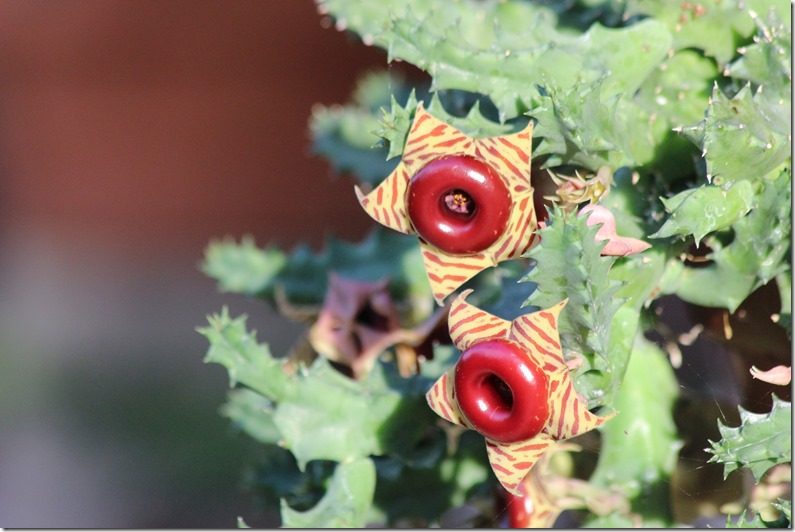I have talked about stapeliads before, but I’ve gone through a dry spell with no flowers lately. The spell was finally broken the other day, and I just had to share again!
Stapeliads can be found in a variety of countries, but this one, Stapelia lepida, is native to Southern Africa and is sometimes labeled as Orbea lepida. Like most Stapeliads, especially the larger flowered ones like the Stapelia grandiflora I shared with you a few blogs back, this one has a distinctive odor, but you have to get down really close to the flower to actually smell it. Flies can smell it, though, and are attracted to it, and they pollinate the plant.
Stapelia paniculate sp. scitrula is a new one in my collection, and I was tickled to death when it bloomed this year. It is a miniature subspecies considered to be one of the rarer species. It is found in a restricted area in the Republic of South Africa. The flowers also have a scent, but you have to get extremely close to smell it. I tried and smelled nothing.
I have enjoyed Stapelia zebrina de marco for several years, the Lifesaver stapeliad, but I have just recently found it on the Internet identified as a huernia. The two species are related, so at least I am in the ball park. Regardless, it is a plant I always enjoy and marvel at the flowers. They stay open for several days, too, and I have not detected a scent in the flower, but I am sure a light one is there somewhere.
Stapeilaids are relatively easy to grow, usually bloom more than once a year, and are fun to have in your collection.







Recent Comments